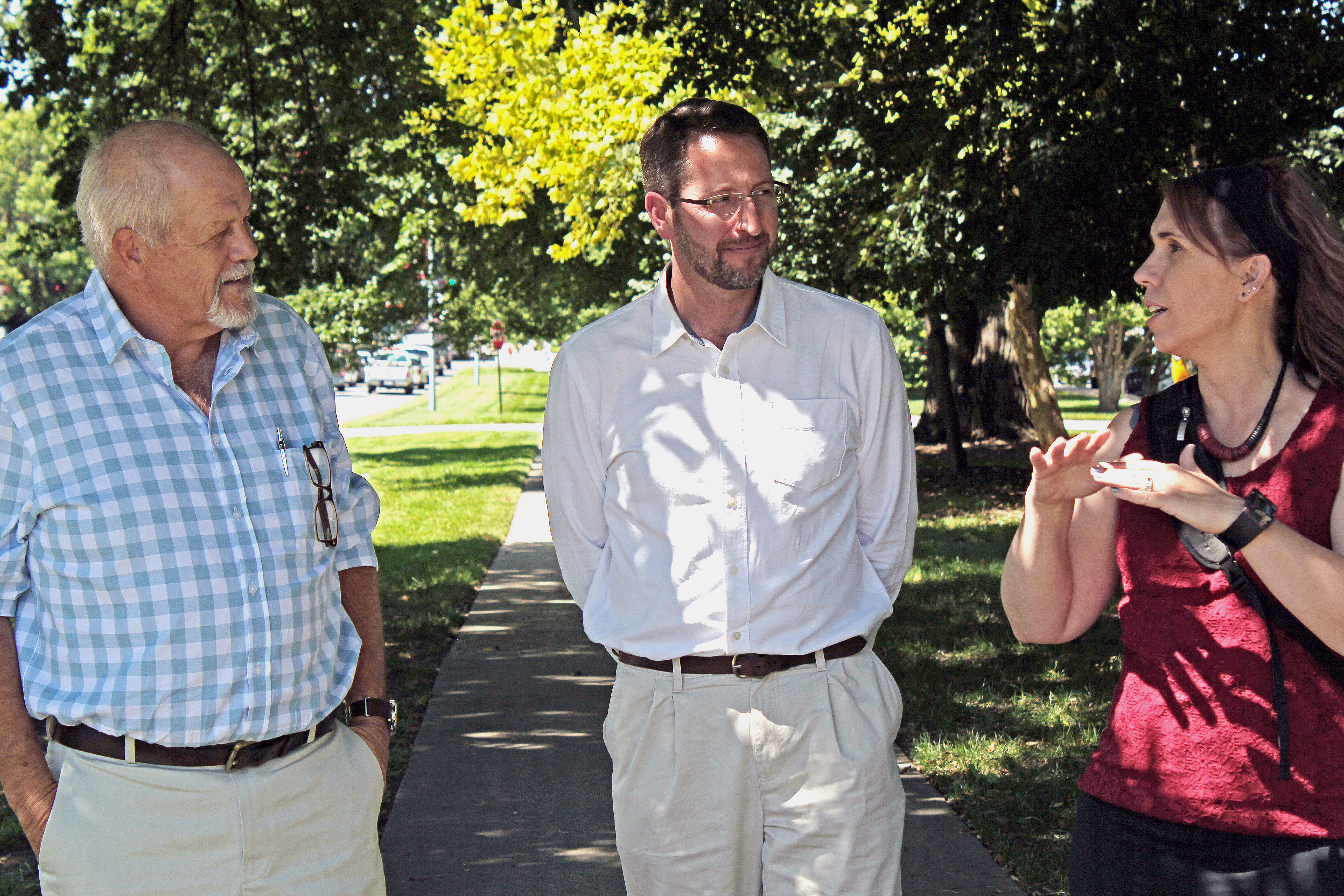
The seed of an idea from Dr. Andries Jordaan’s visit to the National Drought Mitigation Center several years ago is finding fertile soil in South Africa’s disaster management communities.
Jordaan first visited the NDMC to meet with the center’s Director Emeritus Don Wilhite. Many of the principles the two discussed were disseminated to a new generation of South African planners in Jordaan’s capacity as director of the Disaster Management Training and Education Centre for Africa at the University of the Free State.
Still, after his nation’s struggles with record-breaking drought in 2015, Jordaan saw room for improvement. “I recognized that in spite of the impact DiMTEC has been able to make on disaster preparedness, a gap remains in disaster response in South Africa.”
That recognition led Jordaan to invite a few key players in South Africa’s agriculture and disaster response communities to join him on a return visit to Lincoln. With Jordaan on the August 2017 trip were Janse Robie, head of Natural Resources at AgriSA, a nonprofit organization that functions as an interface between government and about 28,000 South Africa farmers; and Moses Musiwale Khangale, director of Fire Services for the South African Ministry of Cooperative Governance and Traditional Affairs.
The South Africans shared an overarching concern about drought’s impact on South African food production and availability, and a joint goal of preventing food scarcity during future droughts. The two main agricultural production systems in South Africa, commercial farmers who are usually net exporters of food crops and communal farmers who own the bulk of the countries livestock, were each hit hard in 2015. Most of the latter are subsistence farmers, who had no resources to spare as drought progressed. “Any dry period to them is a drought because they have no resiliency,” Jordan said. “Drought impacts them at a lower SPI than commercial farms. … We need to research better thresholds for drought.”
Rice yield from commercial farms was less than half of the usual annual total because of the drought. Normally self-sufficient and with enough food security to be a net food exporter, the drought led to imports of rice, and a rise in food prices in the country. “There is a saying in South Africa,” Jordaan said. “When agriculture sneezes, the whole economy catches cold.”
Robie saw the potential for mitigating a repeat of the 2015 harvest scenario through South Africa’s utilization of NDMC monitoring and prediction tools. The challenge before him now is to start discussions to determine the entity that would best adapt and administer those tools in a consistent, objective manner. One thing he has in his favor is the frank communication between AgriSA and its members. “As a testing ground,” Robie said, “farmers well give honest feedback on whether the system is working or not.”
Khangale was also thinking of his constituents, in this case municipalities across South Africa. Currently the ministry’s forecasting is done with post-drought data and applied to a response mode of drought management. Products like VegDRI and QuickDRI would be a boon to his agency’s predictive capacity, and utilizing online NDMC handbooks can help municipal planners. He sees his agency as being in a position to “draw some lessons from the use of NDMC outreach and planning frameworks that could help local governments served by the ministry to identify the community assets to be accessed and managed during disasters like drought.”
Following two days in Lincoln exchanging information with NDMC climatologists, geospatial technologists, and outreach and planning analysts, the group headed west to a ranch outside Chadron, Nebraska, owned by Barb Cooksley, a member of the Nebraska Climate Assessment Response Committee. Robie saw the ranch visit as an opportunity to see first-hand how drought planning would be “implementable from an agricultural point of view, and how it’s done on the farm. That’s important.”
Looking forward to further collaboration with NDMC and to sharing lessons learned in Lincoln with his colleagues in Pretoria, Khangale was optimistic about getting NDMC’s monitoring and planning tools even more deeply integrated into South African disaster preparedness. “When we go back we will prepare a comprehensive report to the Minister, which is the normal process. But because the minister has established an inter-ministerial drought task team, we will then also present the report to that task team. … so that we plant that seed to say we were away, and these are the things we can take away from the important conversations we had the last two days.”
Suzanne Plass, National Drought Mitigation Center
More details at: http://drought.unl.edu/